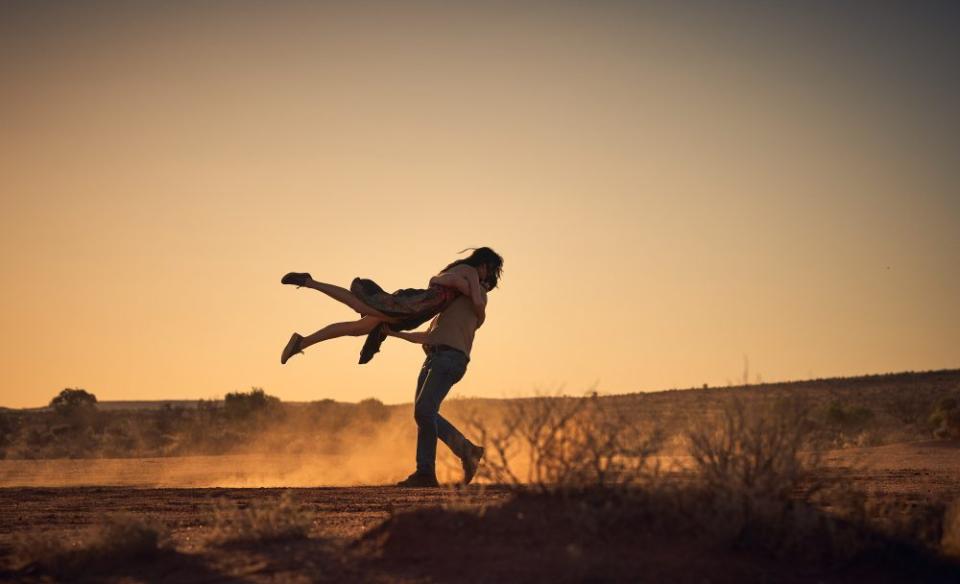How Filmmaker Benjamin Millepied and Nicholas Britell Used Choirs to Help ‘Carmen’ Sing
- Oops!Something went wrong.Please try again later.

Benjamin Millepied, who choreographed and co-starred in 2010 Oscar nominee “Black Swan,” had been wanting to bring his take on the classic opera “Carmen” to the big screen for more than six years. The score would be one of the most important components for Millepied, who was directing a feature film solo for the first time, and he turned to composer Nicholas Britell (“Don’t Look Up,” “If Beale Street Could Talk”) to help execute his vision. It wouldn’t be wrong to say that their collaboration made choirs sing.
Georges Bizet’s opera, which bowed in Paris in 1875, was set in southern Spain. Millepied’s movie, is a complete re-imagining, debuting Sept. 11 at the Toronto Intl. Film Festival released by Sony Pictures Classics, begins in Mexico with a jaw-dropping flamenco number that showcases Marina Tamayo as Carmen’s mother on the grounds of the family’s house. Some men arrive looking for Carmen, and a tense standoff ends in her mother’s brutal murder. “In the Heights” actor Melissa Barrera plays Carmen, who tries to flee the country but is stopped by border patrol agent Aidan (Paul Mescal). When Aidan can’t bring himself to arrest Carmen, the two flee to Los Angeles.
More from Variety
To give the film a multicultural feel, Millepied incorporated touches from his early childhood in Senegal as well as motifs from Eastern European and West African music. “We wanted the world to be unique and encompass different influences,” he explains.
Britell’s completely original score took an experimental approach to the music, which threads song and movement into the narrative framework. “We didn’t know where we were going. We didn’t know what the score was going to be,” Britell says. But adapting to a story’s development and momentum was an approach he was familiar with from his collaboration with Barry Jenkins on films including “Moonlight” and “If Beale Street Could Talk.”
Millepied also relied on Britell to pen original songs for the film; the composer worked with songwriters Taura Stinson (“Mudbound”), rapper The DOC and Grammy winner Julieta Venegas. As the score came together, so did the songs.
Britell’s way into the score melded the mood of the characters with the story’s roots. “I felt it would be something that had a classical nature to it,” he says. “We wanted it to have a level of sonic aggressiveness. There are synthesizers, audio experiments and a string orchestra.”
Adds Millepied, “As music draws choreography in my head, it also brought visceral imagery and atmosphere.”
But the real discovery came when Britell was watching a scene that involves Aidan and Carmen in a motel room. The two have grown closer since fleeing Mexico and are hiding out above a nightclub that belongs to her dead mother’s best friend, Masilda (Rossy de Palma). “I remember saying to Benjamin, ‘What if there’s a choir that was in the score singing while they’re in the motel?’” says Britell, adding that the idea “felt crazy to me.”
But Millepied gave him the freedom to experiment, so the choir serves as a kind of Greek chorus, providing a commentary on what’s happening. Millepied and Britell selected lyrics from Henri Meilhac and Ludovic Halévy’s original libretto to Bizet’s opera, and Britell arranged them into the score. The choir singing the French lyrics provides a bridge from the staging of the opera to Millepied’s screen reimagining.
Millepied also took inspiration from his cast. As with Britell, he found them inspiring to work with and remained open to their suggestions. He says, “We had an open and playful process, one that was spontaneous and alive.”
The film is peppered with long takes. One scene, in particular, is seven-minutes long. It is between Masilda and Carmen in the club when Masilda discovers Carmen dancing on her own. It was de Palma’s first scene on set, but the director praises his star, Barrera who Melissa did an incredible job with the dancing and singing.
He notes Barerra had never taken ballet classes but was a natural. His objective throughout was to immerse the viewer in dance. He says, “I would block and choreograph all those camera sequences with my DP and focus on the upper body.” He adds, “The bodies are always alive, they are the most important and expressive. That scene was about how they interact with one another. I wanted to come in and go through the club, but the camera movement was really all about instinct.”
Millepied adds, “Needless to say, Melissa did an incredible job with the dancing and singing, she worked very hard, she’s not a professional dancer, nor does she take classes. She always came to life with the dancing when the camera rolled. It all linked together for her, character, story and ultimately the dancing.”
He compares the experience to film school since it brought together everything he loves: dance, music and choreography. The film is both an aural and visual experience.

Sharp listeners will note how the prominence of the male or female choral voices signifies the direction of the story. “I was driven by where and how that came together and what was happening,” Britell explains. “Towards the beginning of the film, where there is violence, the men’s choir provides a dark setting. In contrast, the women’s choir provides the heart of the score.”
Best of Variety
'The Sopranos' Gets the Funko Pop Treatment in New Collectibles Release
From 'The Sandman' to 'Blonde': Books Made Into Movies and TV Series That You Should Read
Jennette McCurdy's Provocative Book 'I'm Glad My Mom Died' Is Already a No. 1 Bestseller
Sign up for Variety’s Newsletter. For the latest news, follow us on Facebook, Twitter, and Instagram.

